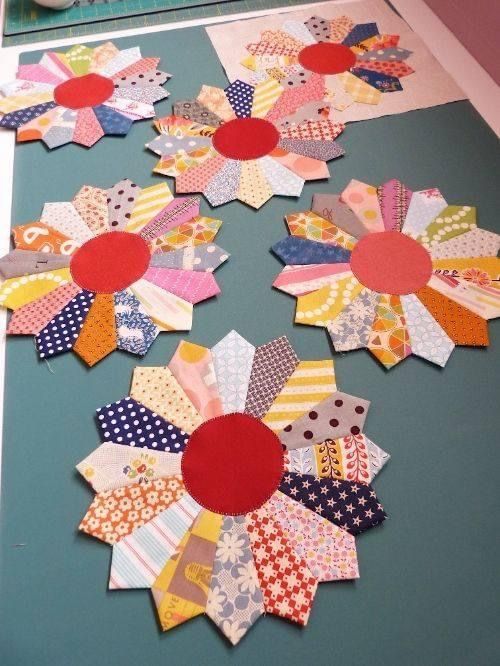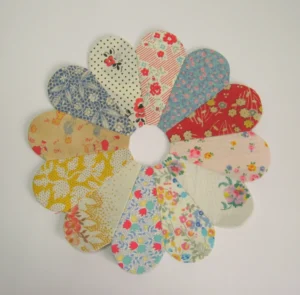The Dresden Plate quilt pattern is a timeless and elegant design that has been cherished by quilters for generations. This beautiful pattern features petal-like fabric pieces arranged in a circular motif, creating a visually appealing quilt block. In this tutorial, we will guide you through the step-by-step process of making a Dresden Plate quilt, from fabric selection to final assembly.
Choosing Fabrics and Materials
To create a stunning Dresden Plate quilt, selecting the right fabrics is crucial. This pattern is perfect for using up fabric scraps or showcasing a collection of coordinating prints. Choose a mix of light and dark fabrics for a striking contrast.
For one Dresden Plate block, you will need at least 20 petal-shaped fabric pieces. Additionally, you will require a background fabric, fusible interfacing (optional), thread, and a quilting ruler. Ensure you have a rotary cutter and cutting mat for precise fabric cutting.
Cotton fabric is the best choice due to its ease of handling and durability. If you want a vintage aesthetic, consider using reproduction prints or florals to enhance the classic look of the quilt patterns.
Cutting the Fabric Pieces
Accurate cutting is essential for a well-balanced Dresden Plate. Below are the cutting instructions:
- Cut 20 petal-shaped pieces from different fabric prints, each measuring approximately 5 inches tall and 2.5 inches wide at the widest point.
- Cut a 6.5-inch background square from a solid or low-volume print.
- Cut a 3-inch fabric circle for the center of the Dresden Plate.
Using a Dresden ruler, you can achieve uniform petal shapes. If you don’t have one, templates can be found online or created manually.

Piecing the Dresden Plate
To form the Dresden Plate, fold the wide end of each petal in half, right sides together, and sew along the top using a ¼-inch seam allowance. Trim the corners and turn the petal right side out, pressing it flat to create a pointed tip.
Arrange the petals in a circular pattern, making sure to alternate colors or prints for a balanced look. Once you are satisfied with the placement, sew each petal together using a ¼-inch seam allowance until the circle is complete.
Press the seams open to ensure a smooth and professional finish. The completed Dresden Plate should lay flat and maintain its circular shape.
Attaching the Dresden Plate to the Background
Center the completed Dresden Plate on your 6.5-inch background square. Use pins or fabric glue to temporarily hold it in place. Carefully stitch around the outer edges of the Dresden Plate using a small zigzag or straight stitch.
For the center circle, fold the edges under by ¼ inch, press, and position it in the middle of the plate. Sew around the circle’s edges using a hand-appliqué stitch or machine stitch.
If using fusible interfacing, adhere it to the back of the plate before attaching it to the background. This method provides extra stability and prevents fraying over time.
Quilting and Finishing
Once the Dresden Plate block is secured to the background, it’s time to quilt the piece. Choose a quilting method that enhances the quilt patterns, such as echo quilting around the petals or decorative free-motion designs inside the petals.
Layer the quilt top with batting and backing fabric, then baste the layers together. Quilt along the edges of the Dresden Plate, ensuring the design remains intact and well-defined.
To finish, trim any excess batting and backing fabric, then attach a binding strip around the edges. A 2.5-inch-wide binding strip is ideal for framing the quilt block beautifully.
Final Thoughts
The Dresden Plate quilt pattern is a delightful project that allows for creative fabric choices and intricate detailing. Whether you’re making a single block for a pillow or an entire quilt, this timeless pattern adds charm and elegance to any project.
By following this free tutorial, you can master the art of Dresden Plate quilting while developing your piecing and appliqué skills. Experiment with different color schemes and sizes to make a quilt that truly reflects your personal style. Happy quilting!

